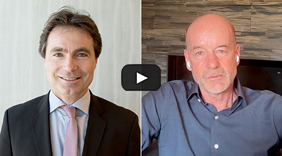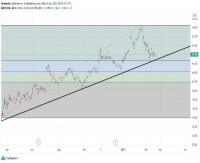|
Opalesque Industry Update - Private equity dealmaking remained muted in H1 2025 as trade wars, tariffs, and market uncertainty weighed on valuations. Average holding periods have stretched past five years, leaving over $1 trillion of NAV trapped in older vintages and slowing distributions to investors. The secondary market is booming, with new entrants and mega-funds fueling record fundraising, but demand for liquidity continues to outpace supply.
Fundraising remains difficult for most managers, with capital concentrated among the largest firms. Allocators are shifting focus away from IRR as the sole performance measure, prioritizing managers with higher DPI, faster distributions, and specialist strategies. Meanwhile, European institutions are reconsidering US exposure amid policy risk, and private wealth channels are emerging as an important new capital source. Key trends include: • Liquidity crunch: Over $1 trillion of NAV remains stuck in older vintages, limiting distributions and reinvestment capacity. • Secondaries surge: 2025 is on track for another record year in secondaries fundraising, but deal flow is still outpacing capital raised. • Shifting allocator focus: IRR alone no longer cuts it. Allocators increasingly reward managers who return capital quickly (higher DPI), and are tilting toward specialists and co-investments. Recent months have been challenging for private equity but innovation and continued demand for the asset class indicate positive momentum. Liquidity continues to be the key topic in manager-investor conversations as persistent market uncertainty has extended a period of subdued dealmaking. Sponsors are trying to balance the return of capital with protecting multiples on investment. Allocators are being forced to rethink pacing with cashflows now negative for five of the last six years. The ongoing threat of trade wars and significant tariffs is eroding consumer and business confidence and disrupting supply chains. While pockets of optimism remain heading into the end of 2025, deal volume has been muted across most sectors compared with 2024, with the exception of technology and financial services. Average holding periods upon exit have steadily increased over the past eight years and now stand at over five years. There is also a greater dispersion between the average holding period across sectors, varying by how each is affected by a range of macro-economic factors. Around $1 trillion of NAV that should have been returned to investors remains locked up in aging private equity vintages. The secondaries sector continues to be an important tool for both investors and managers to gain much-needed liquidity, but tensions are rising in some areas as allocators feel shut out of deals. Larger allocators have expressed concern that they are unable to underwrite manager-led deals in the short timeframe required by managers. Particularly at issue are assets being moved into a continuation vehicle earlier in a fund's life, with some investors bemoaning the loss of upside in both the fund and the continuation vehicle. Despite this, fund managers have continued to push into the secondaries sector through acquisitions, team lifts, buildouts, and new firm launches. Deal volume has outpaced fundraising, suggesting the sector remains undercapitalized, at least in the short term. While there are plenty of new entrants, established players still dominate secondaries fundraising, with mega-funds pulling in most of the capital. There have also been several notable LP-led secondary sales by large investors such as Yale, Harvard, and NYCRS. Some have said they are using sales as an opportunity to streamline manager rosters and reinvest back into private equity, while others may look to more liquid alternatives, or greater exposure to private credit strategies. Another trend in allocation decisions is mounting evidence that investors are increasingly looking at how fast sponsors have returned capital in prior funds. Sponsors that had successful fundraises in the last 18 months have both a higher net IRR and DPI in prior vintages. Meanwhile, some firms with strong performance but lower DPI have failed to raise a new fund altogether. Some older managers with underwhelming performance are beginning to bow out or downsize. This has led to a vibrant emerging manager landscape as key investment professionals opt to spin out or leave to launch their own ventures. The pace of launches could even outpace firm wind-downs. Many of these new managers are opting to go further down market and are targeting niche sub-sectors. Manager selection is becoming more critical amid headwinds in the asset class and questions about performance. Allocators are increasingly looking to invest with specialists over generalists and prioritizing managers who can give them access to lower or no-fee co-investments. Co-investments are increasingly seen as a tool to generate alpha, with investors trying to cherry-pick the best deals from their best managers to juice returns.
|
Industry Updates
Average private equity holding period tops 5 years as economic tensions persist
Friday, August 22, 2025
|
|





 RSS
RSS








